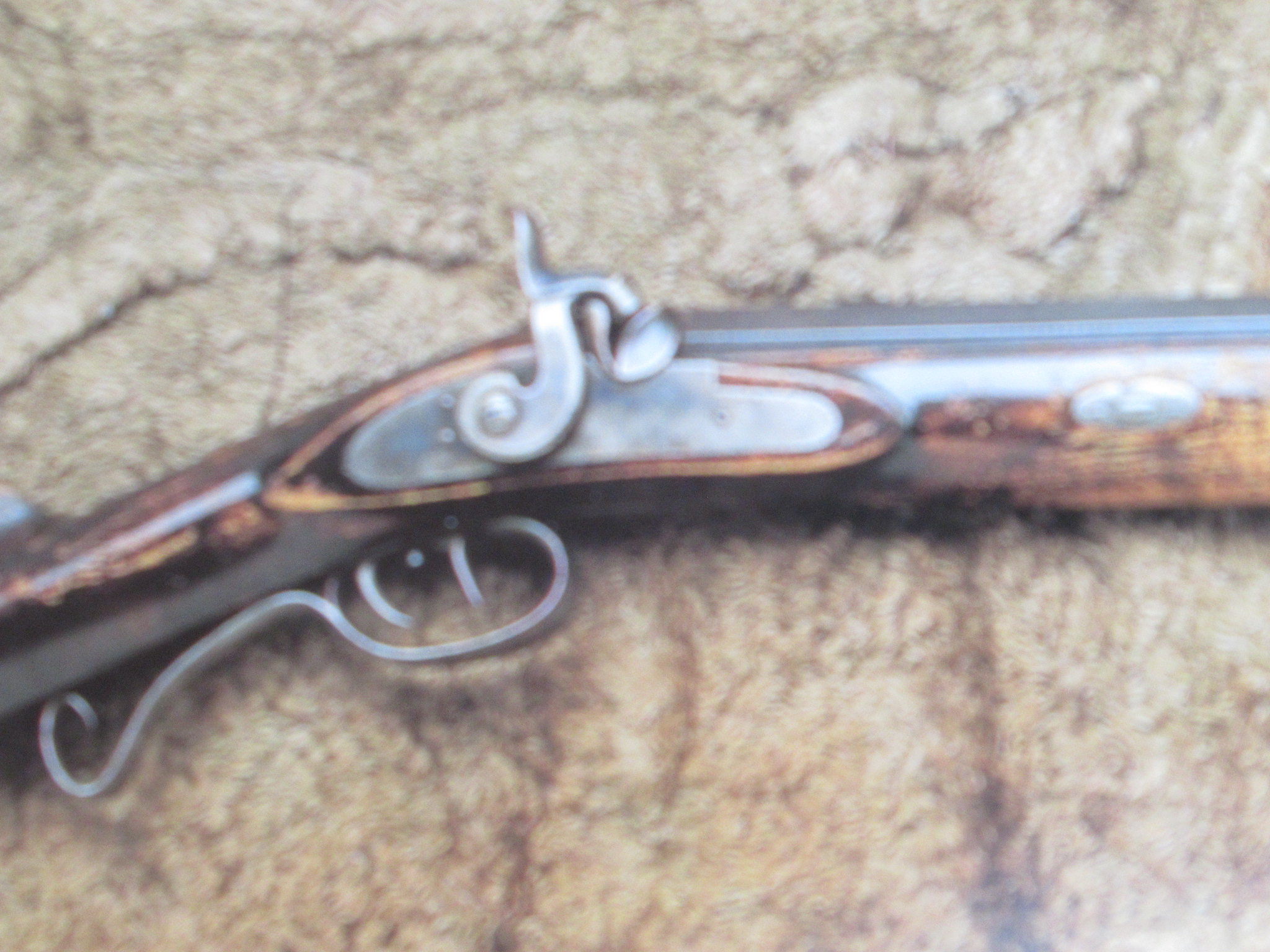I've had the opportunity to look at the finish on 3 Hawken rifles in the lab (not my lab--a grad student friend). From what we could determine via microscopy/spectrometry, the finish consisted of linseed oil, lead, and some type of plant resin. There were no signs of a "ground" (like shellac or linseed oil) used to seal the wood or fill the pores in the wood (maple in all three cases). (We were only able to do a chemical analysis on a sample from one rifle; last I heard that paper is still awaiting publication.)
Varnish is an old idea, and goes back at least 2,400 years. Varnish was originally just a carefully-heated preparation of a drying oil (e.g. linseed oil), metallic dryers (e.g. lead, in the form of lead carbonate or lead oxide), and resins (e.g. rosin, copal, shellac). Linseed oil, lead, and limestone were all commonly available in the early US. By the 1820s, pine pitch, rosins and colophony, shellac, copal, a couple of balsams, and mastic were available in St. Louis either directly or via order from eastern suppliers. Varnish-making was a known skill, learned as part of an apprenticeship (at least in the case of luthiers, some painters/finishers, and fine-art painters).
Based on the results of examination of the finish on the three Hawken rifles, I think it would be reasonable to conclude the likely original finish on all three rifles was varnish. Unless something is found in business records or some old narrative or interview, it will likely never be known if the finish was purchased or shop made.





